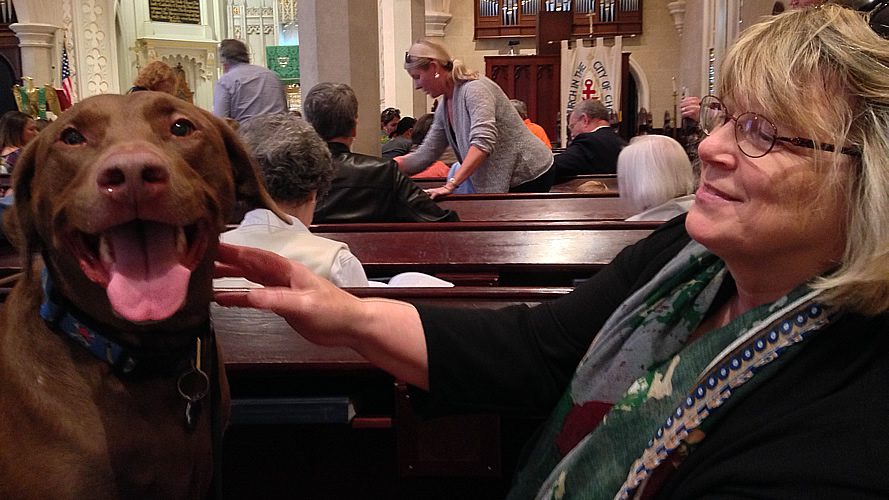
POOCH POWER. West Ashley’s Elizabeth Jones and her dog Sophie were among dozens of pets at the annual Blessing of the Animals at Grace Episcopal Church on Sunday evening. A short service punctuated by songs by the church’s children’s choir ended with prayers for pets, each of whom received special dog tags (or ferret tags or cat tags). Another event for dog-lovers: Bark in the Park! Octoberfest from 11 a.m. to 4 p.m. Oct. 18 at Wannamaker County Park. Photo by Andy Brack.
IN THIS ISSUEFOCUS, Tim Ervolina: Ways to help victims of the Great Flood of 2015
BRACK: Stop shortchanging South Carolina
IN THE SPOTLIGHT: Charleston Green Commercial
REAL ESTATE, Doug Holmes: Traditional sellers face competition
GOOD NEWS: Big check to chase away cancer, more
FEEDBACK: Send us your letters
CALENDAR, Oct. 12+: A musical, block party and Greek Fest
REVIEW: Furiously Happy: A Funny Book About Horrible Things
MYSTERY: Ring our bell on this one
S.C. ENCYCLOPEDIA: Granby, S.C.
TODAY’S FOCUS
Ways to help victims of the Great Flood of 2015
By Tim Ervolina, president, United Way Association of South Carolina
OCT. 12, 2015 | This flood has a thousand stories.
I could tell you about the disaster response volunteer from Danville, Virginia, who called in the midst of the deluge to offer tractor-trailers full of relief supplies, along with trained volunteers to pass them out.
I could tell you the community health worker who was looking for infant formula for a Hispanic mother of a fragile baby. When we got it to her, we found that the worker had been in a shelter since her own evacuation days ago.
I could tell you about the faith communities, the first responders, the medical staff, the animal shelter volunteers and the ordinary people who opened their hearts, their homes and their wallets to their neighbors and to total strangers.
But I want to tell you one particular story.
Michael works for United Way’s 2-1-1 information and referral service. He is an extremely talented young father who goes to college at night. He is a talented photographer and writer. Before he came to work for us, he had some run-ins with the law. We believed in him and he has excelled. He doesn’t make a lot of money, but he’s working hard to make sure that someday he will be solidly middle class.
Today, Michael was on the phone with people whose lives have been dramatically changed. He was helping them find the resources they need. And he’s darn good at it. He never told anyone who called him that he knew what they were going through because he had lost everything himself: his modest home, his clothes, his car and his precious camera. He didn’t tell them he was staying in a shelter. He just kept comforting others and making sure they had what they needed.
Right now, at this intersection of crisis and compassion, our state is responding like never before to feed, clothe, comfort and shelter those who have nothing. At least for awhile.
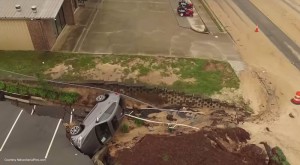
Photo courtesy of Nelson Aerial Productions.
However, we have neglected investment in our infrastructure so much and for so long that a regional disaster of this magnitude is going to have ripple effects through the entire state. Redesigning a modern, safe water supply and sewerage system, rebuilding neighborhoods, roads, businesses and lives will be a long, hard, expensive process.
We no longer have a choice because our capital city and much of our state has been ruined. But that’s the long story. Here’s the short story: We need your help now.
United Way has established several regional flood recovery funds to help victims:
- For the Tri-county area: http://www.tuw.org/floodrecovery
- For the Midlands: https://uwmidlands.wufoo.com/forms/flood-disaster-relief-fund/
- For Williamsburg and Georgetown counties: https://uwmidlands.wufoo.com/forms/flood-relief-fund-black-river-united-way/
- For Clarendon, Sumter and Lee counties: https://uwmidlands.wufoo.com/forms/flood-relief-fundsumter-clarendon-and-lee-county/
- Statewide: United Way Association of S.C. flood relief
In addition to your gifts, your time is needed as well. You can help get connected to volunteer opportunities here: getconnected.uwasc.org/drm.
This flood has a thousand stories. Be part of one.
Tim Ervolina is president of the United Way Association of South Carolina. This story was first published last week in Statehouse Report.
COMMENTARYStop shortchanging South Carolina
By Andy Brack, editor and publisher
OCT. 12, 2015 | South Carolinians have to get over the cheapskate model of democracy. To do otherwise is to continue to fail our future.
![]() Billions of dollars of underinvestment in roads, bridges and health care over recent years leaves the state at the mercy of disasters of one sort or another.
Billions of dollars of underinvestment in roads, bridges and health care over recent years leaves the state at the mercy of disasters of one sort or another.
Just witness the 11 trillion gallons of rain over the last week that flooded rivers, burst dams, destroyed homes, upended lives and killed at least 17 people.
If there ever is a teaching moment for state legislators, the flood illustrates how South Carolina must invest in her infrastructure and people. To do otherwise is to sentence our children to a future that mimics a continuing past of dysfunction and misery.
The state’s record in recent years is embarrassing:
Roads. State lawmakers started 2015 knowing that South Carolina has more than $40 billion in road and bridge maintenance needs over the next 25 years. Various plans were drafted and discussed about investing in infrastructure needs, but they got caught in the continuing babble of politics and bickering, despite the fact that a broad majority wants to raise taxes — yes, raise taxes — to pay the piper. But nothing was done. As a result, there’s no new revenue stream now to help pay for the mess caused by the flood.
Education. State lawmakers have underfunded public schools by $3 billion over the last 7 years by not following state law to fund education at established per-pupil levels. Such cuts rob students of their futures and create what one analyst has called a permanent underclass that will continue until the state is willing to dig itself out of the problem. More troubling: Even with a court-ordered deadline to come up with a legislative solution to create a more equitable education funding system, legislators are complaining about the deadline, not worrying about the problem.
Health care. State lawmakers continue to refuse billions of dollars of federal aid to expand Medicaid funding to provide access to Obamacare for 200,000 poor citizens who don’t make enough money to get federal subsidies. Refusing federal aid for the flood of health problems among the state’s poor makes absolutely no sense when contrasted against televised coverage of Gov. Nikki Haley with her hand out to the federal government, ecstatic for federal flood aid.
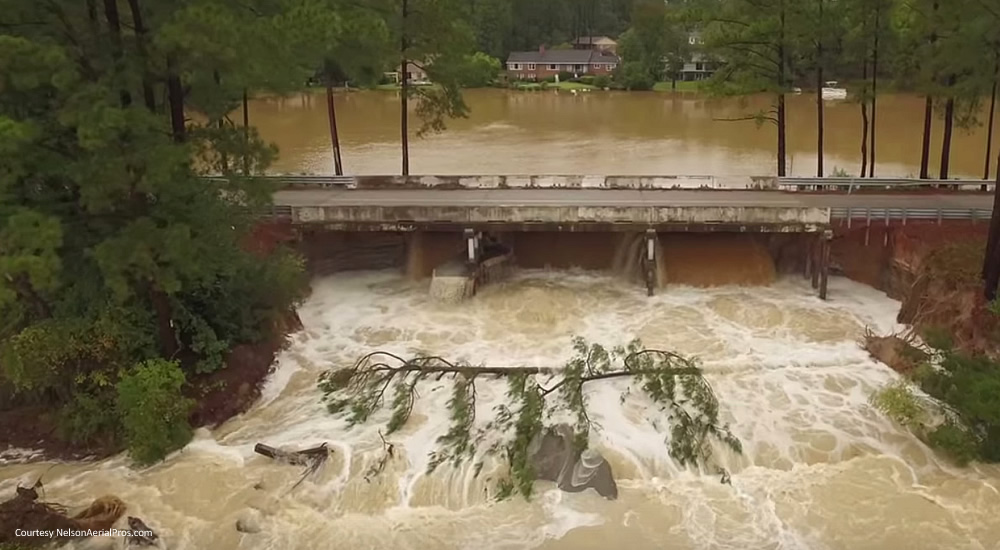
Photo courtesy of Nelson Aerial Productions.
South Carolina’s leaders seem to have missed the lesson at school about the common good — that the state has a broad responsibility to provide for the general welfare of all people by setting policies that benefit society as a whole. This fundamental idea that stretches to Aristotle is a bulwark of democracy, a guiding principle in our Constitution that should trump selfish, political sorties designed to maximize the private good for individuals and corporations.
“The common good is the basis for democracy and sustaining the common good is the basis for sustaining democracy,” the Riley Institute’s Don Gordon observed this week. “The founding fathers knew that.”
For too long, the leaders of this state have been cutting government services and cutting revenue streams to fund remaining services in a third-rate, banana-republic drama to realize the Norquistian dream of shrinking government to a size that it can drown in a bathtub.
But as South Carolinians realized this week when flood waters rose to unprecedented levels, government has a vital role in keeping our society civil.
Thank goodness for first responders, police, firefighters and others who are steering rescue and recovery operations. They are from the government.
Thank goodness for federal aid — the same kind of “common good” aid that most of South Carolina’s congressional delegation voted against after Hurricane Sandy. That help is fueled by a little bit of money that all of us pay toward the common good and make sure money is available for help when it’s needed.
Let’s pray we never need a natural disaster like the Great Flood of 2015 to remind state leaders of their responsibilities of looking out for the long-term common good by investing in infrastructure, education and health care. There’s no education in the second kick of a mule.
Andy Brack is editor and publisher of Statehouse Report. Send feedback to: feedback@statehousereport.com.
IN THE SPOTLIGHTCharleston Green Commercial
 Without the support of our generous underwriters, we would not be able to provide Charleston Currents to you for free every week. Today, we shine our spotlight on Charleston Green Commercial, a full-service commercial property management company that pays attention to detail, provides exceptional personal service and is committed to adding value to buildings. Offering professional property management, consulting and other services, the company strives to improve clients’ bottom lines with superior service, accessibility, reliability and a wealth of knowledge of the Charleston real estate market. By blending use of proven contractors and contacts with environmentally-conscious practices, the company helps clients stay on the leading edge of commercial real estate practices. More.
Without the support of our generous underwriters, we would not be able to provide Charleston Currents to you for free every week. Today, we shine our spotlight on Charleston Green Commercial, a full-service commercial property management company that pays attention to detail, provides exceptional personal service and is committed to adding value to buildings. Offering professional property management, consulting and other services, the company strives to improve clients’ bottom lines with superior service, accessibility, reliability and a wealth of knowledge of the Charleston real estate market. By blending use of proven contractors and contacts with environmentally-conscious practices, the company helps clients stay on the leading edge of commercial real estate practices. More.
- To meet all of our underwriters, click here.
Traditional sellers face competition from new construction
By Doug Holmes, contributing editor
OCT. 12, 2015 | As the market conditions change, so do the types of competitors for traditional sellers.
 With the real estate market in Charleston and Charleston itself doing so well right now, new construction is on the rise. During the downturn of 2008 to 2012, new construction hit a low point. Many contractors went out of business. Now that has all turned around. New construction now makes up over 40 percent of all the properties currently under contract in the tri-county area!
With the real estate market in Charleston and Charleston itself doing so well right now, new construction is on the rise. During the downturn of 2008 to 2012, new construction hit a low point. Many contractors went out of business. Now that has all turned around. New construction now makes up over 40 percent of all the properties currently under contract in the tri-county area!
This can be major competition for Joe and Sally Homeseller who can’t offer free upgrades and other incentives. Traditional sellers must know what they are competing with. We have several areas where new construction is the predominant seller. These include Johns Island (70 percent of under contract properties are new construction), North Charleston outside Interstate 526 (50 percent), Mount Pleasant north of the Isle of Palms Connector (64 percent), Goose Creek (55 percent), and Daniel Island (55 percent). Big builders have many advantages that they can use to compete with traditional sellers. They can offer several different types of incentives, including helping the buyers with their closing costs and financing.
 However, buyers should approach new construction with caution. This is best done by them having their own buyers’ agent. Many buyers of new construction make the mistake of not having any representation. A good buyers’ agent can make you aware of all the potential pitfalls with new construction and their private contracts. Normally when buying a home from a traditional seller, a standard South Carolina purchase contract is used. This standard contract is equally protective of the buyer and seller. However, when you purchase new construction, you will be required to use a purchase contract that has been devised by the builder and has been designed to protect the builder at every turn. While a buyer’s agent will not be able to change that contract, he will at least be able to make you aware of the pitfalls and keep you on schedule with all of the deadlines.
However, buyers should approach new construction with caution. This is best done by them having their own buyers’ agent. Many buyers of new construction make the mistake of not having any representation. A good buyers’ agent can make you aware of all the potential pitfalls with new construction and their private contracts. Normally when buying a home from a traditional seller, a standard South Carolina purchase contract is used. This standard contract is equally protective of the buyer and seller. However, when you purchase new construction, you will be required to use a purchase contract that has been devised by the builder and has been designed to protect the builder at every turn. While a buyer’s agent will not be able to change that contract, he will at least be able to make you aware of the pitfalls and keep you on schedule with all of the deadlines.
While new construction is a big competitor now for traditional sellers, short sales and foreclosures are no longer much of a concern. At the worst in 2010, short sales and foreclosures made up over one third of all the properties that went under contract. Now, that is down to about 7 percent and is relatively insignificant. Short sales don’t make much sense for any of the parties involved anymore. A short sale is a situation where a homeowner owes more on the property than he can sell it for. He has to get permission from his lender to sell it for less and the lender giving this permission accepts the loss. This was done readily when the prices were dropping. Now that prices are rising, banks don’t really have a good reason to do this. And they don’t really want to foreclose on a property. They’d rather wait, often without payment, until prices improve enough that the seller can sell for more than he owes.
Doug Holmes is a local Realtor with Keller Williams. He also provides markets analysis for a fee to several hundred local real estate agents. He has a bachelor’s degree in physics and math from the College of Charleston as well as a master’s degree in math from the college, where he still teaches a couple of statistics classes in the fall. Visit his website here: www.CharlestonHolmes.com
GOOD NEWSBig check to chase away cancer
Chase After a Cure recently presented a $120,000 check to the MUSC Children’s Hospital in its annual donation to fund childhood cancer research and equipment. Started in 2009, it has raised almost $1 million to thwart rare, hard-to-treat cancers.
Pictured, from left, are Chase After a Cure representatives Debbie Rupert, founder Whitney Ringler, Chase Ringler, Tom Orth, Adam White, Kim Lenz, Margaret Marcoe and MUSC pediatric oncologist Dr. Jacqueline Kraveka, Dr. Michelle Hudspeth, Dr. Mehrdad Rahmaniyan and Dr Li Li. The charity got its start by Ringler after her son Chase survived an aggressive form of cancer. Photo provided.
Also in good news:
Honor for the Blues Doctor: The National Endowment for the Arts recently honored a blues guitarist familiar to many across the Lowcountry — Drink Small. Named a National Heritage Fellow earlier this year, Small participated in an Oct. 2 concert in the nation’s capital as rains that deluged South Carolina were beginning to fall.
Marco Werman, host of PRI’s The World radio show, told us that Small had fun leading up to the Friday performance: “During rehearsals at George Washington University’s Lisner Auditorium, he’d sit quietly in the green room, his diminishing sight leaving me the impression that he was staring into space, and then from seemingly nowhere, he’d wheel out a thunderous one-liner: ‘I’ve got a big mouth and I’m from the South!’ or ‘I went from the workhouse to the White House,’ referring to a performance he once gave in Washington. Drink Small was the life of this party.” More.
Book launch: Award-winning authors Aida Rogers and Josephine Humphreys will launch “State of the Heart, Volume 2” at noon Oct. 22 a Blue Bicycle Books Charleston Author Series luncheon at Halls Chophouse. Rogers is book editor and Humphreys is one of the 38 writers who contributed to the second volume of the work that celebrates and commemorates how South Carolina inspires her writers. Tickets are $30 for the talk and a three-course lunch and includes a champagne reception at the bookstore afterwards. Copies of the book also can be purchased. More: BlueBicycleBooks.com
Shoutout to Brian Hicks: Hats off to The Post and Courier columnist for telling it like it is, warts and all, about libraries on James Island: “[County] Council asked the library board to recommend sites for the new branches. The board did its homework, and offered several options ranked on cost and proximity to the most residents. It was a model of efficiency — and Council promptly ignored it.” More.
FEEDBACKSend us a letter
Rant. Rave. Tell us what you really think. If you have an opinion on something we’ve offered or on a subject related to the Lowcountry, please send your letters of 150 words or less to: editor@charlestoncurrents.com. Our feedback policy.
CALENDARFrom a musical to Greek Fest to a block party
 (NEW) Little Shop of Horrors: Oct. 14 to Nov. 1, Dock Street Theatre, Charleston. Just in time for Halloween, you can see plant puppets from Broadway and the national tour of this musical by Charleston Stage with nine actors and a live nine-piece orchestra. More: CharlestonStage.com.
(NEW) Little Shop of Horrors: Oct. 14 to Nov. 1, Dock Street Theatre, Charleston. Just in time for Halloween, you can see plant puppets from Broadway and the national tour of this musical by Charleston Stage with nine actors and a live nine-piece orchestra. More: CharlestonStage.com.
Charleston Greek Fall Festival: Oct. 16 to 18, Greek Orthodox Church of the Holy Trinity, 30 Race St., Charleston. Join a celebration of Greek faith, culture, food, wine and music at this annual tradition. Free for active-duty military and kids under 13. Just $3 for seniors and students; $5 for adults. More.
(NEW) Author visit: Noon to 2 p.m., Oct. 17, Saffron Cafe and Bakery, 333 East Bay St., Charleston. Nurse Jean D. Moody-Williams will explore her new book on caregiving and devotions, “Transitions, Trust and Triumph” at this book signing. More: jeanmoodywilliams.org.
North Charleston Block Party: 4 p.m. to 8 p.m., Oct. 17, Olde Village, East Montague Street near Park Circle. This third annual event will feature live music, arts and craft booths, costume contest and more. There will be trick-or-treating for kids 12 and under. Email for more information.
Thanks Joe! 3 p.m. to 7 p.m., Oct. 25, at Brittlebank Park, followed by 7 p.m. to 9 p.m. at nearby Joe Riley Stadium, Charleston. This is a privately-funded, family event to allow people to give their appreciation for Mayor Joe Riley’s 40 years of public service. The first half of the event will feature games and food, while the last two hours will include a Blue Dogs all-star tribute, rocker Edwin McCain, the Emanuel AME Choir and more. More details to come.
History of Charleston’s mayor: 6 p.m., Oct. 28, Main Library, Calhoun Street, Charleston. Just in time for the 2015 election, the library will host a talk that delves into the evolution of Charleston’s executive office, from “intendant” to mayor. More.
Bird walks: 8:30 a.m. to noon, every Wednesday and Saturday. This is the time of year that a great variety of migrating birds fly through the Lowcountry so what better time to take part in one of the regular early morning bird walks at Caw Caw Interpretive Center in Ravenel. Pre-registration is suggested. Cost is $5. Walks also are conducted on James Island and Folly Beach. Learn more online.
If you have an event to list on our calendar, please send it to editor@charlestoncurrents.com for consideration. The calendar is updated weekly on Mondays.
REVIEWFuriously Happy: A Funny Book About Horrible Things
Humor by Jenny Lawson
![]() Furiously Happy: A Funny Book About Horrible Things is the second humor memoir from popular blogger Jenny Lawson (The Blogess). In it, Lawson addresses topics light and serious with her signature cringingly honest, self-deprecating humor. Lawson has a heaping dose of mental illness (anxiety and depression top the list), and she’s not afraid to talk—and joke–about it. She decided, in the wake of a major depressive episode, to take every opportunity to be “furiously happy.” This involved carrying out a lot of pranks on her husband, but also some poignant reflection on living with mental illness. This book’s mission, then, is twofold: make readers laugh and combat the stigma around discussing mental illness openly. (And also maybe to promote the sale of taxidermy?).
Furiously Happy: A Funny Book About Horrible Things is the second humor memoir from popular blogger Jenny Lawson (The Blogess). In it, Lawson addresses topics light and serious with her signature cringingly honest, self-deprecating humor. Lawson has a heaping dose of mental illness (anxiety and depression top the list), and she’s not afraid to talk—and joke–about it. She decided, in the wake of a major depressive episode, to take every opportunity to be “furiously happy.” This involved carrying out a lot of pranks on her husband, but also some poignant reflection on living with mental illness. This book’s mission, then, is twofold: make readers laugh and combat the stigma around discussing mental illness openly. (And also maybe to promote the sale of taxidermy?).
To conclude, there are some additional things you should know about this book: (1) You don’t have to have read Lawson’s blog or her first book, Let’s Pretend This Never Happened, to appreciate this one—and in fact I had read neither when I started reading this book. (2) You might laugh so much you cry and totally alarm the people around you—I am also speaking from experience here. (3) There are way more taxidermied animals than you’d expect. (4) Taxidermy can be funny.
— Sarah Burriss, Main Library, Charleston, S.C.
![]() Find this and similar titles from Charleston County Public Library. This item available as a book. To learn more or place a hold, visit www.ccpl.org or call 843-805-6930.
Find this and similar titles from Charleston County Public Library. This item available as a book. To learn more or place a hold, visit www.ccpl.org or call 843-805-6930.
Ring our bell
CLUE: It’s on the Charleston peninsula. Contributing photographer Michael Kaynard snapped this photo somewhere downtown, but it might prove pretty tough for you to identify where. If you’ve got a guess, send it to us at editor@charlestoncurrents.com— and make sure to include your hometown.
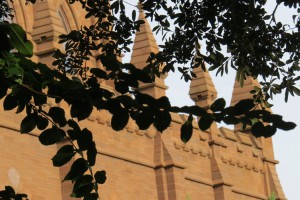 Unlike this week’s photo, the Mystery Photo by Michael Kaynard in the last issue wasn’t too tough for many. First out of the gate was frequent identifier Chris Brooks of Mount Pleasant who knew the shot was of the Cathedral of St. John the Baptist in downtown Charleston. Others answering correctly included Jane Riley Gambrell of Charleston, Susan Breslin of Folly Beach and Jeff Millings of West Allis, Wisc. Thanks all!
Unlike this week’s photo, the Mystery Photo by Michael Kaynard in the last issue wasn’t too tough for many. First out of the gate was frequent identifier Chris Brooks of Mount Pleasant who knew the shot was of the Cathedral of St. John the Baptist in downtown Charleston. Others answering correctly included Jane Riley Gambrell of Charleston, Susan Breslin of Folly Beach and Jeff Millings of West Allis, Wisc. Thanks all!
- If you have a picture with which you’d like to stump our readers, send it along to editor@charlestoncurrents.com.
Granby
Editor’s note: With all of the flooding from the last week, we thought readers might find it interesting to see how flooding impacted this Midlands area almost 200 years ago.
 S.C. Encyclopedia | Situated at the head of navigation of the Congaree River, Granby was among the first important trading posts in the South Carolina interior. The town originated as a large Indian village on Congaree Creek. In 1716 colonial officials entered into an agreement with the Cherokee Indians to establish the first inland trading post. With the addition of a fort in 1748, the site became known as Congaree Fort. In 1754 a Swiss immigrant named Friday purchased one hundred acres on the Congaree and established a ferry. The area became known as Granby, where a trading post was built in 1765 by merchants James Chesnut and Joseph Kershaw. This two-story frame building stood for almost two hundred years. Occupied by the British during the Revolutionary War, it was known as Fort Granby and was the site of several skirmishes between British and patriot forces. The wartime heroine Emily Geiger was interrogated by the British during the time they occupied Fort Granby.
S.C. Encyclopedia | Situated at the head of navigation of the Congaree River, Granby was among the first important trading posts in the South Carolina interior. The town originated as a large Indian village on Congaree Creek. In 1716 colonial officials entered into an agreement with the Cherokee Indians to establish the first inland trading post. With the addition of a fort in 1748, the site became known as Congaree Fort. In 1754 a Swiss immigrant named Friday purchased one hundred acres on the Congaree and established a ferry. The area became known as Granby, where a trading post was built in 1765 by merchants James Chesnut and Joseph Kershaw. This two-story frame building stood for almost two hundred years. Occupied by the British during the Revolutionary War, it was known as Fort Granby and was the site of several skirmishes between British and patriot forces. The wartime heroine Emily Geiger was interrogated by the British during the time they occupied Fort Granby.
After the war, Granby continued to flourish. When Lexington County was established in 1785, Granby was named the seat of government. President George Washington visited Granby on his southern tour in 1791 and recorded a favorable impression of the prosperous town. In 1802 John Drayton described Granby as a settlement of two hundred houses, considerably larger than neighboring Columbia which had between eighty and one hundred houses. But the growth of Columbia eventually eclipsed Granby. Constant flooding forced the removal of the county seat to Lexington in 1820. By 1826 Robert Mills observed that Granby was “nearly deserted.” All that remains is the Granby Cemetery, which has gravestones dating to the eighteenth century.
– Excerpted from the entry by Leo Redmond. To read more about this or 2,000 other entries about South Carolina, check out The South Carolina Encyclopedia by USC Press. (Information used by permission.)
About Charleston CurrentsOUR UNDERWRITERS
Charleston Currents is an underwriter-supported weekly online journal of good news about the Charleston area and Lowcountry of South Carolina.
- Meet our underwriters
- To learn more about how your organization or business can benefit, click here to contact us. Or give us a holler on the phone at: 843.670.3996.
OUR TEAM
Charleston Currents offers insightful community comment and good news on events each week. It cuts through the information clutter to offer the best of what’s happening locally.
- Mailing address: O. Box. 22261 | Charleston, SC 29413
Phone: 843.670.3996
Charleston Currents is provided to you twice a week by:
- Editor and publisher: Andy Brack, 843.670.3996
- Contributing photographer: Michael Kaynard
- Contributing editor, real estate: Doug Holmes
- Contributing editors, seniors: Catherine LaFond, Mary Ross McQuage
- Contributing editor, money: Kyra Morris
- Contributing editor, Palmetto Poem: Marjory Wentworth
SUBSCRIBE FOR FREE
Subscriptions to Charleston Currents are free.
- Click here to subscribe.
- Unsubscribe. We don’t want to lose you as a reader of Charleston Currents, but if you must depart, please click here.



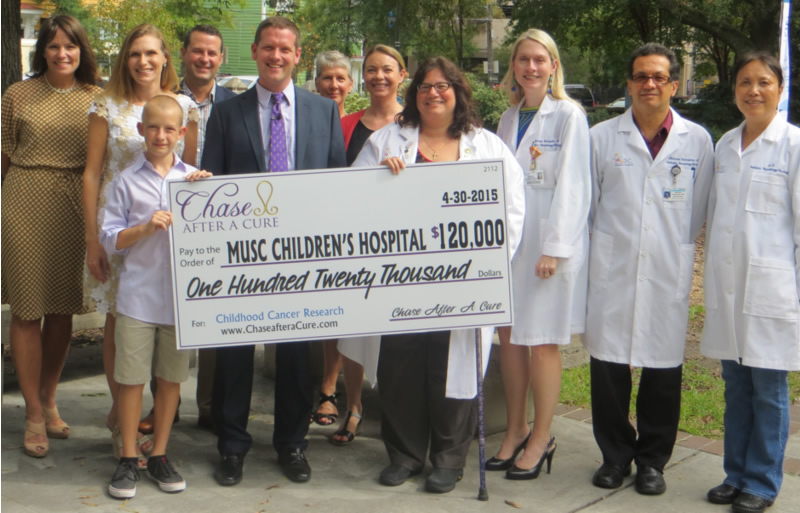

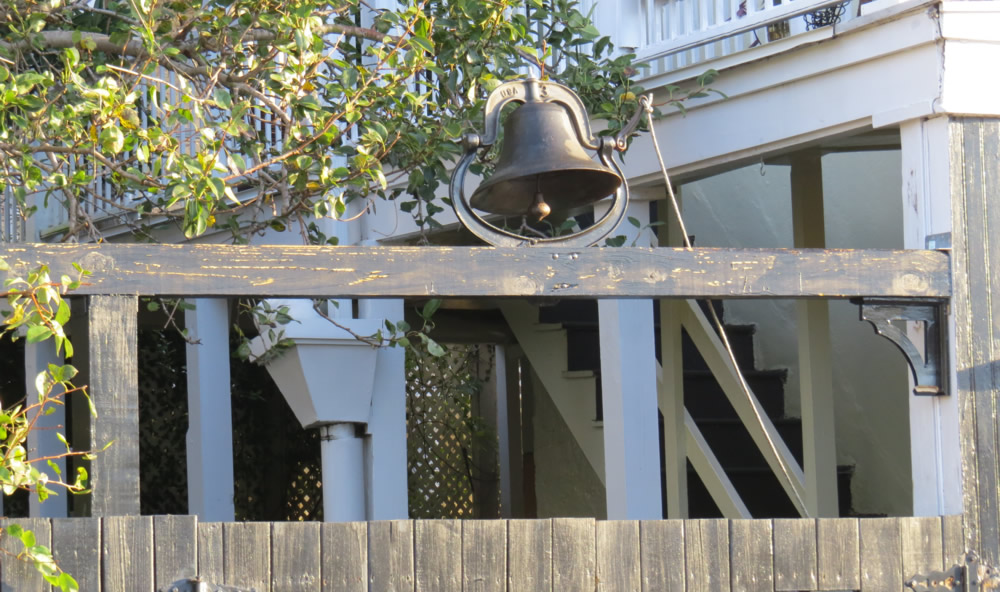

 We Can Do Better, South Carolina!
We Can Do Better, South Carolina!
























